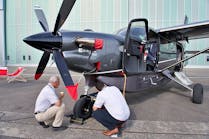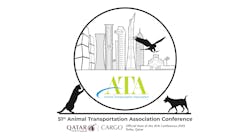ARSA Survey Shows Industry Poised for Growth, Facing Technician Shortage Headwind
WASHINGTON – The Aeronautical Repair Station Association’s 2018 member survey, conducted during the first quarter of the year, paints a picture of a healthy and growing industry facing a major strategic threat in the form of a looming technician shortage.
Half of the 125 respondents reported increased profitability in the last two years (only 14 percent said profitability decreased) and two-thirds expect revenues and markets to grow in coming year (only two percent expect a decrease). Employment demand is also strong: 98 percent expect to add to or maintain the current size of their workforce, which will require hiring for new positions, filling vacancies or both. That may be more easily said than done given that 82 percent report difficulty finding qualified technical workers (37 percent report a lot of difficulty).
Survey respondents collectively reported more than 1,000 technician vacancies. Projecting this figure across ARSA’s entire membership means more than 2,500 unfilled technical positions. Using annual revenue data collected through the survey, ARSA estimates its members will forego between $333.5 million and $642.5 million in revenue this year if those vacant positions remain unfilled. Although ARSA represents a considerable number of repair stations, not all in the industry are association members. Thus, the actual potential economic impact of unfilled positions on the entire aviation maintenance industry is likely significantly higher.
ARSA has been asking questions about recruitment challenges for many years, but this was the first time the association polled its members about the practical effect of the skills gap. Eighty percent report the worker shortage increases time to complete work for customers, 28 percent have not added new capabilities, 20 percent have turned down work and 11 percent have decided against expanding facilities. Those results underscore how personnel issues ripple through the aviation industry and impact growth in communities around the country.
With the foregoing in mind, it is not surprising that difficulty finding/retaining technical talent was reported as the top strategic threat facing repair stations (53 percent of respondents). Other looming threats are availability of maintenance information (tied with workforce at 53 percent), regulatory costs/burdens (45 percent), inconsistencies between regulatory systems (28 percent) and restrictions on international trade/markets (18 percent).
The survey also underscores how important government business is for the aviation maintenance industry. Fifty-seven percent of respondents said their companies provide services to one or more governmental entities (whether in the United States or overseas). Forty-nine percent of respondents do business with the military, 17 percent work with some other part of the federal government, 13 percent work with state governments, and seven percent provide services to local governments.
Overall satisfaction with ARSA membership is also high (4.42 on average on a one to five scale on which five is “very satisfied”). Access to regulatory and legislative expertise was ranked as the most important member benefit (4.64 out of five). Other top-rated benefits include regulatory advocacy (4.55), free regulatory compliance resources (4.19), congressional advocacy (4.10), Dispatch and hotline newsletters (4.08) and ARSA online training (4.04).
The survey was conducted from January 23 to April 3. Multiple emails requesting participation were sent to the primary contact at each ARSA member company. One hundred and twenty-five ARSA member organizations responded, representing 488 U.S. and non-U.S. approved maintenance facilities. The survey’s estimated margin of error is seven percent (95 percent confidence level).
ARSA is the only association devoted to the unique needs of the global civil aviation maintenance industry. It is dedicated to helping member companies operate more efficiently and effectively, while continuing to ensure the safety of aircraft worldwide. To learn more about the association’s work on behalf of both industry stakeholders and the flying public, please visit ARSA.org


